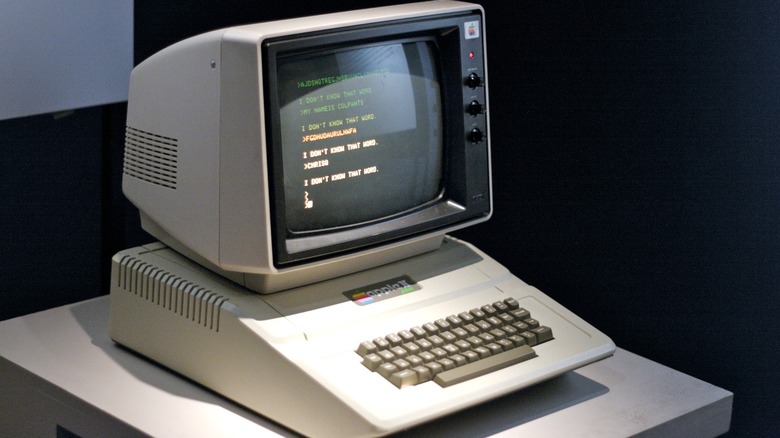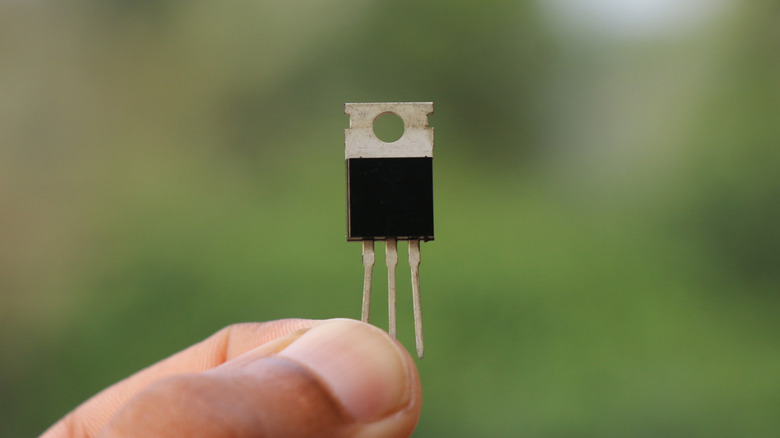The Most Mass-Produced Invention In The World Isn't What You Think
Modern humans have existed for around 300,000 years, and in all the time we've been here, we've made a lot of things. In the early days, homo sapiens fashioned tools from flint and other materials, and over time, our inventions evolved. We discovered agriculture, invented the wheel, and carved a niche for ourselves all over the world. Since we've been making things for so long, you might think that the wheel or plow, or something equally as old, has been produced more than anything else, but that's not true.
It's also not arrowheads, nails, underwear, or PEZ dispensers. In fact, the item that's been mass-produced more than any other is so ubiquitous in modern life that we'd likely not recognize the world without it. That's because the most produced invention humanity has created is the transistor. While transistors were initially comparatively large objects, they've continued to shrink in size since their introduction. While the first transistor looked like something you'd keep on your desk in an office as a conversation piece, it revolutionized computing.
Transistors moved computing technology away from large vacuum tubes, and as they became smaller, computers became faster. The modern transistor looks nothing like Bell Labs' first point-contact transistor, invented in 1947, but it still functions the same way. Because of its small size, more than 13 sextillion were produced between 1947 and 2018. For reference, 13 sextillion is the number 13 with 21 zeroes after it. What's more, because they're produced so frequently and in such great numbers, that amount has risen exponentially for years.
The modern transistor
Transistors are fairly simple machines that are used as switches, where they exist in two states: on or off. This makes up the binary computing language used by electronic devices, and the transistor is integral. Modern transistors are metal-oxide semiconductors (MOS), which use silicon as their substrate material. MOSs are microscopic, so you can't even see a single one with the naked eye, though you've likely looked at millions of them without realizing it because they're fundamental in the creation of computer chips.
A single computer often has many billions of transistors, found on the CPU, RAM, GPU, and Solid State Drives (SSDs). A single CPU can contain around 40 billion, depending on the model. Looking back, an Intel chip from 1971 had 2,300 transistors, so you can see how the numbers have increased. A lot of this has to do with miniaturization, as modern transistors are limited by the size of silicon atoms. Modern transistors measure 3-5 nanometers (nm), though in July 2021, a 1 nm transistor was produced.
Because a silicon atom is 0.2 nm across, it is impossible to create a transistor that is smaller than that. Fortunately, silicon isn't the only substrate material capable of supporting a superconducting transistor, so they could become smaller in the future using different materials, including 2D transistors. Regardless, as computers and electronic devices continue to be manufactured with billions of transistors each, humanity may never outpace the number of its most-produced invention. Still, shifting to quantum computing could change things, as the nascent technology abandons transistors in favor of qubits.

